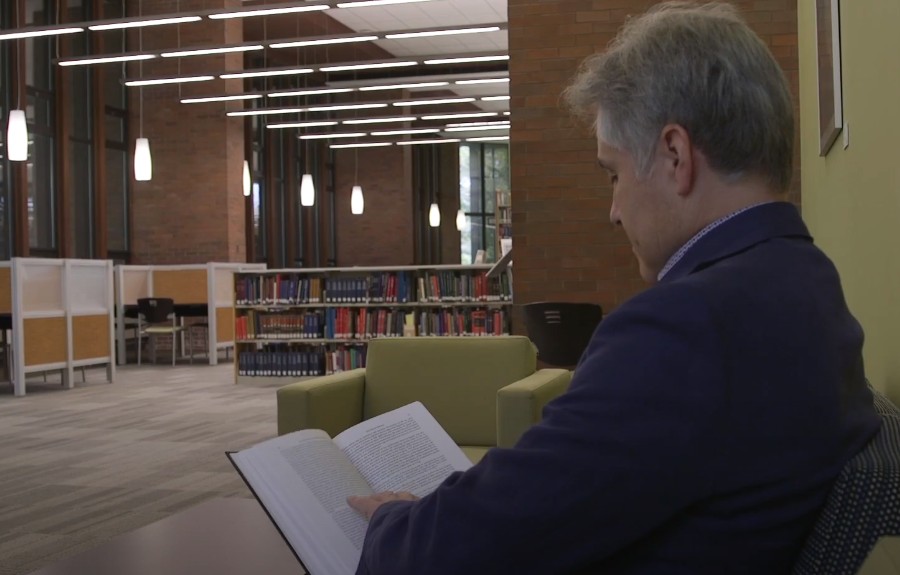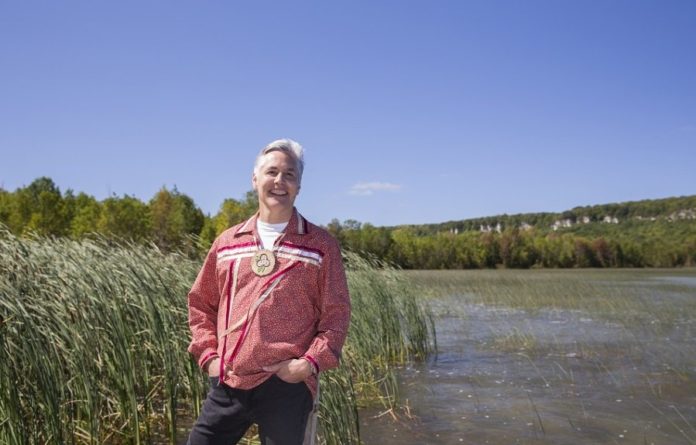John Borrows is the Canada Research Chair in Indigenous Law at the University of Victoria, and the recipient of numerous awards including the 2020 Governor General’s Innovation Award and the 2017 Killam prize in Social Sciences.
In December, Borrows was appointed an Officer of the Order of Canada, one of the country’s highest honours, for his scholarly work on indigenous rights and legal traditions.
Victoria Buzz spoke with Borrows at the end of 2020 to talk about the award, indigenous law and reconciliation, and what the future might hold for Canada’s legal framework.
Victoria Buzz: How are you feeling right now? How does it feel to have this honour?
John Borrows: It feels great, I’ve been able to hear from lots of people. It’s causing me to reflect on all the amazing people I’ve worked with through the years so it feels really wonderful.
This is the latest in a long string of honours you’ve received. Did you have an idea this was coming?
It was a total surprise. Sometimes I have an idea about some awards but this was completely out of the blue.
The award was issued to you in recognition of the work you’ve been doing in Indigenous Law. What are the big changes that you see occurring around you?
Two things: one of the biggest changes I’ve seen as a result of COVID is a lot of First Nations communities have taken that extra step of exercising their self-determination, to take care of themselves, and then coordinate that care with those around them.
A lot of communities shut their borders and then had checkpoints as people were coming onto the reserve, to make sure there’s a level of safety in terms of traffic, and of course emergency services were always allowed.
There was a coordination of care, both for food and for the physical and emotional health and safety of people on the reserve. Food banks were being set up where they hadn’t been set up before, run by the first nation.
There was people sort of setting up different colour codes…Green if everything’s well, yellow if there’s an emotional issue, red if there’s something physically happening. The thing that was amazing to me, that that was going on from coast to coast to coast.
As you know there’s a lot of high rates of transmission, of respiratory diseases historically among first nations. TB is still off the charts for First Nations people, the Spanish Flu was particularly hard, all sorts of earlier issues around smallpox a couple hundred years ago.
People stepped up. It doesn’t mean that there hasn’t been challenges and problems, there’s still real worry there, but that to me has been the biggest message this year.
What’s your take on sustaining indigenous reconciliation, and how do we put pressure on governments to abide by promises they’ve put forward like the Truth and Reconciliation Commission (TRC) and United Nations Declaration of Rights of Indigenous Peoples (UNDRIP)?
One of the things I appreciated about the TRC report is that its calls to actions weren’t just to government, they were to health care and the justice system, universities and businesses and arts, etc.
I have been encouraged to see that different sectors are picking up on calls to action and they’re hard-wiring them into their system, by creating positions or feedback groups for accountability.
In other words, it’s not just the end result that matters, it’s creating processes so that when the public spotlight goes away, the processes continue to work. Those aren’t bright and shiny headlines, but they are the hard institutional work of getting the guts fixed in an organizational setting.
I think that’s what I’m seeing happening. I am disappointed that there’s not been more action on certain things, but I do see the work still unfolding.
On the Island specifically, what are you seeing as positive changes?
The fisheries issue is getting sorted with greater First Nations consultation and participation. There’s some movement around forestry as well, to think of more diverse and diffuse ways of managing forestry. Watershed efforts in the Cowichan area are particularly prominent, with a lot of first nations input and involvement.
And then of course our own law school here at University of Victoria we have, for the first time, a joint degree in Indigenous and common law. Teaching indigenous law formally in a setting that never really taught indigenous law.
Our students are going out and working in communities, in government, businesses, law firms. They are helping to pick up the idea that indigenous people have their standards for judgement that they can bring alongside the common law and try to find a harmonization.
The first cohort is in their third year now, of a four-year program. The first cohort will graduate a year-and-a-half from now.

As those folks enter the workforce, what’s your hope for the ways they can interact with the existing law system, and where do you think it can evolve and go from here?
One of the things that they’re learning, because they’re learning comparatively, is where the common law itself has made choices about what to do or not to do. They are probably more sensitized to that, learning the common law in that comparative framework.
So when they go to practice they’re not just taking for granted what already has been handed to them, they see the decision points that have been made, that are a cultural choice, and do have contingency attached to them. These choices aren’t necessarily universal.
Of course those folks are more prepared to work with indigenous communities in a stronger way because they know about indigenous law. But I think they’ll be better common law lawyers because they’ll see common law itself is something that’s much more supple, flexible, and open to creativity and innovation.
A fish doesn’t know about water until the first time it jumps in the air. Lawyers are just swimming around in water, but our students are constantly jumping into the air and recognizing the water, the common law isn’t just there, it is something, an element.
When our students are working with law firms or businesses or corporations, they are able to bring a new set of eyes, a different analysis. It’s not just revitalizing indigenous law, it’s revitalizing the common law. That’s what I’m quite excited about.
What you’re talking about with common law being pliable, is it a situation where because much of our common law is defined by case law there are opportunities to revisit past judgements or potentially future cases by leaning on past judgements, to sort of push those and say “this perspective was founded in a colonial or settler perspective, here’s what we would bring to the table?”
That’s one definite way that this can occur, the rethinking of judgements. That’s definitely a part of it, but I think it’s really a smaller part, the bigger parts are in the mundane. People can see common law itself as something we participate in, it’s something we do, it’s not just done to us.
I think sometimes it’s lost, that insight. It’s more democratic, it’s more integral to creating processes with greater engagement. Some of the ways that we approach the common law has been much more static and hide-bound and a bit more just status quo.
But this work allows us to look within our environmental assessment, or criminal law, sentencing or administrative law, administration of old-age pension. You know, it goes across the board and it’s hopefully not just gonna be benefitting indigenous peoples but will benefit us all.
Because if we can see the common law as something we do, and not just something that’s done to us, then hopefully we become more participatory in relationships.
Where do you see indigenous law fitting into a possible re-think of how our society functions, and where it’s going?
One of the things that we’ve been required to do as the result of COVID is to take more responsibilities on ourselves, as individuals, as communities. That is being done through law within indigenous communities.
Everything doesn’t have to be centralized. There’s so much that can be done in the home, in the community. UNDRIP legislation is designed to create agreements that would facilitate that kind of diffusion of coordinated responsibility.
For me that would be a huge part of the reset, is to see that what we’ve learned over the past 10 months can be picked up.
I remember going to a UBC graduation when I was first starting in the law school in 1992. There were seven students that graduated but there were 400 people that showed up, celebrating their graduation.
It made me realize that those seven people are really the tip of an iceberg. So much is important in family and communities to get them to that day. I feel that in my own life.
Yes, there’s a moment, a flash in the pan here with an award, but the work continues and it’s actually so connected out through my own family, which I really appreciate. My colleagues in the university and folks across the country, indigenous and non-indigenous.
It’s hard to capture what I’m saying there but what I experienced is a community effort that brings us to these moments.
This interview has been edited for clarity and length.



